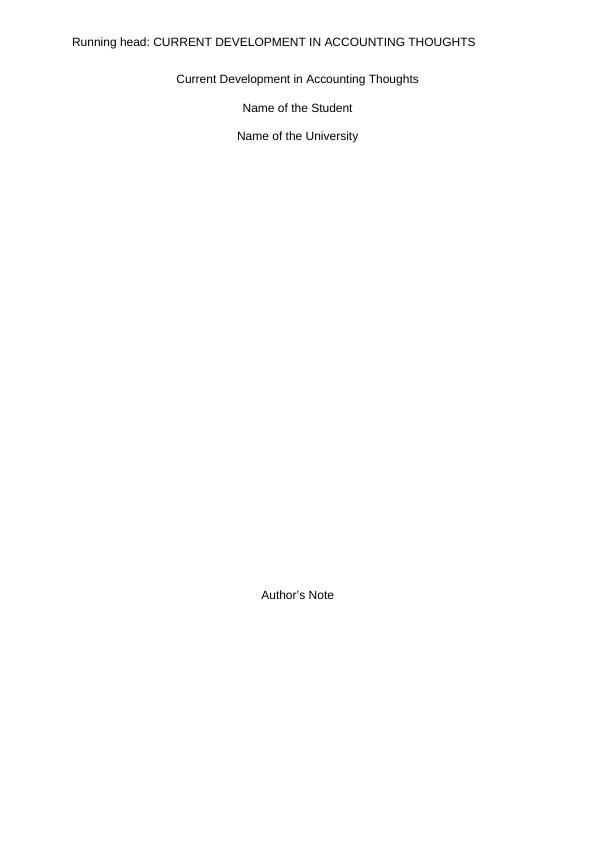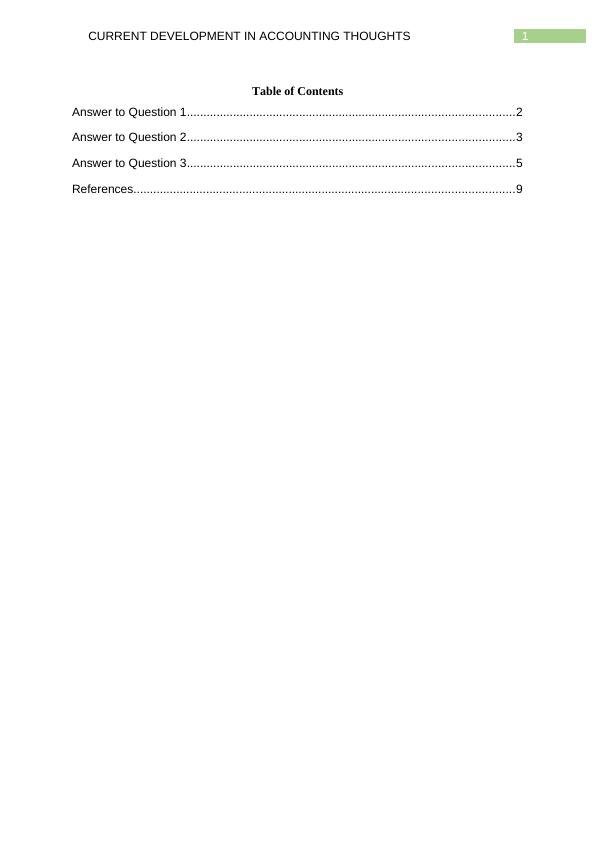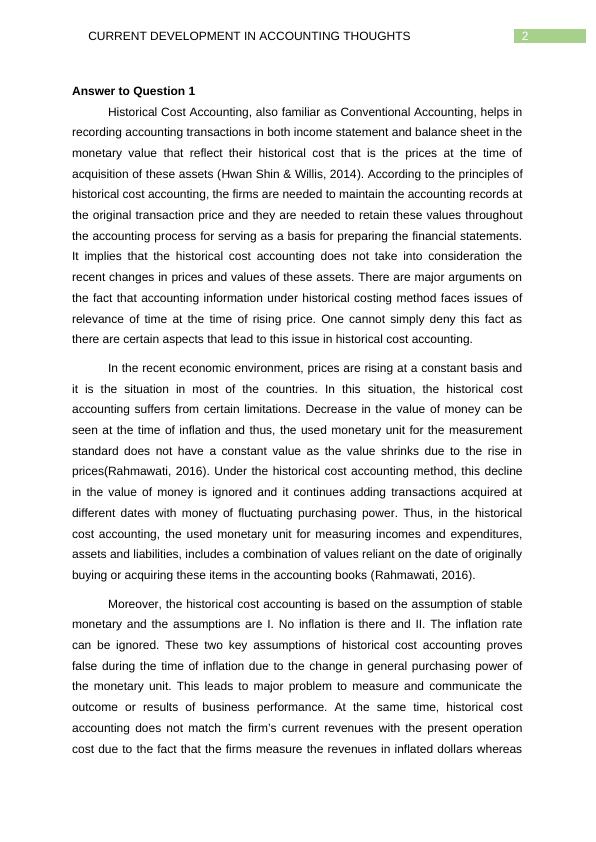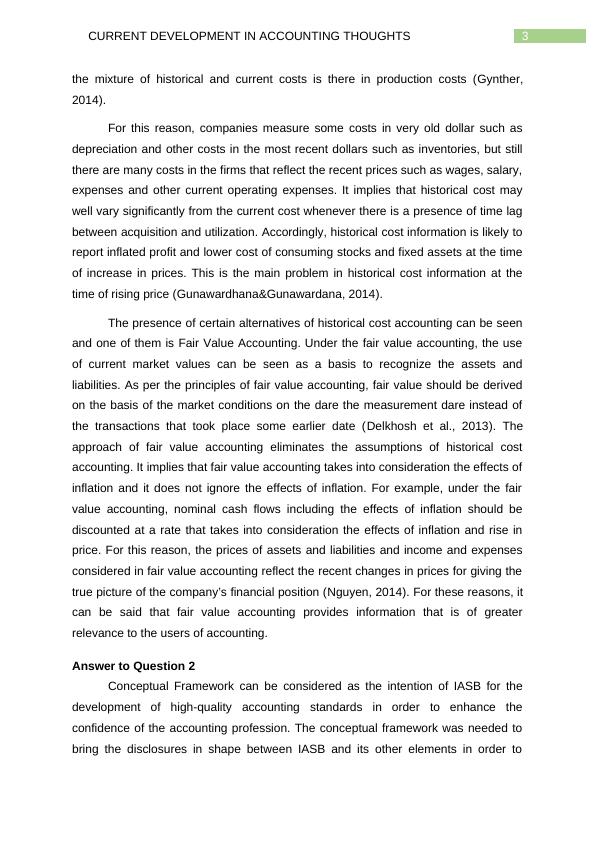Current Development in Accounting Thoughts
Answer three questions related to accounting concepts and frameworks, including the relevance of historical cost information, the purpose of conceptual frameworks, and the shift towards fair value measurement in accounting standards.
11 Pages3430 Words67 Views
Added on 2023-01-16
About This Document
This document discusses the current development in accounting thoughts, focusing on the shift from historical cost accounting to fair value accounting. It explores the link between measurement bases and users of general purpose financial reporting. The document also highlights the limitations of historical cost accounting and the benefits of fair value accounting.
Current Development in Accounting Thoughts
Answer three questions related to accounting concepts and frameworks, including the relevance of historical cost information, the purpose of conceptual frameworks, and the shift towards fair value measurement in accounting standards.
Added on 2023-01-16
ShareRelated Documents
End of preview
Want to access all the pages? Upload your documents or become a member.
Accounting Policy based on IASB Conceptual Framework
|11
|2928
|355
Current Development in Accounting Thought
|10
|3599
|310
Accounting Development: Historical Cost, CPPA, CCA, and Fair Value Accounting
|14
|3661
|499
A Case Study on US GAAP - Assignment
|7
|1913
|197
Current Developments in Accounting Thought
|9
|3085
|71
Current Developments in Accounting Thought
|15
|3514
|246




